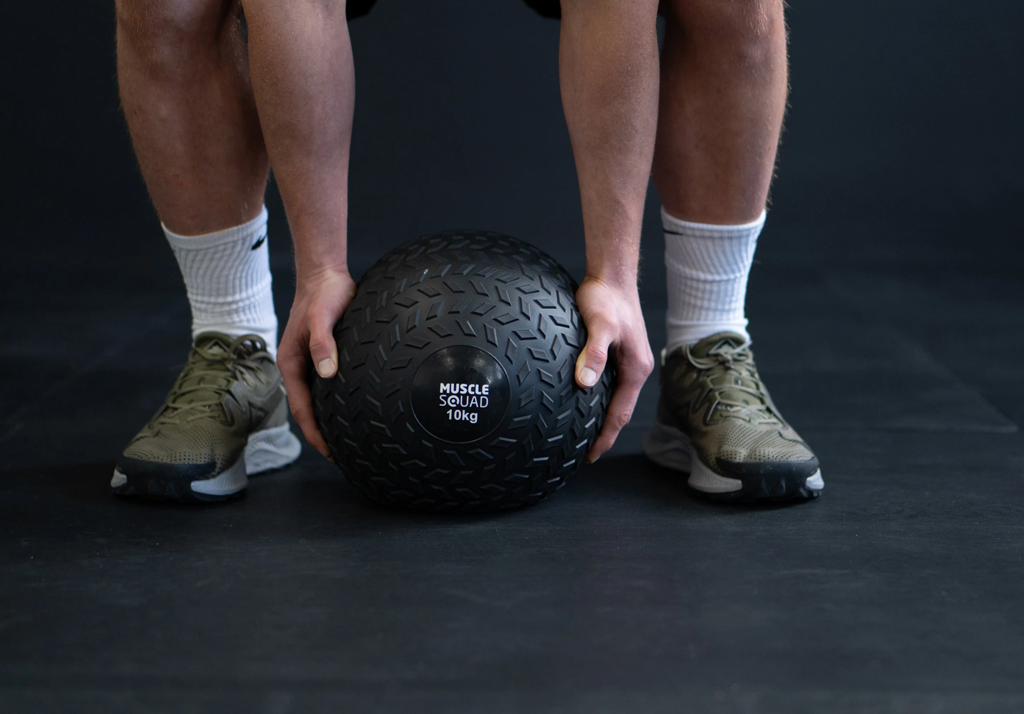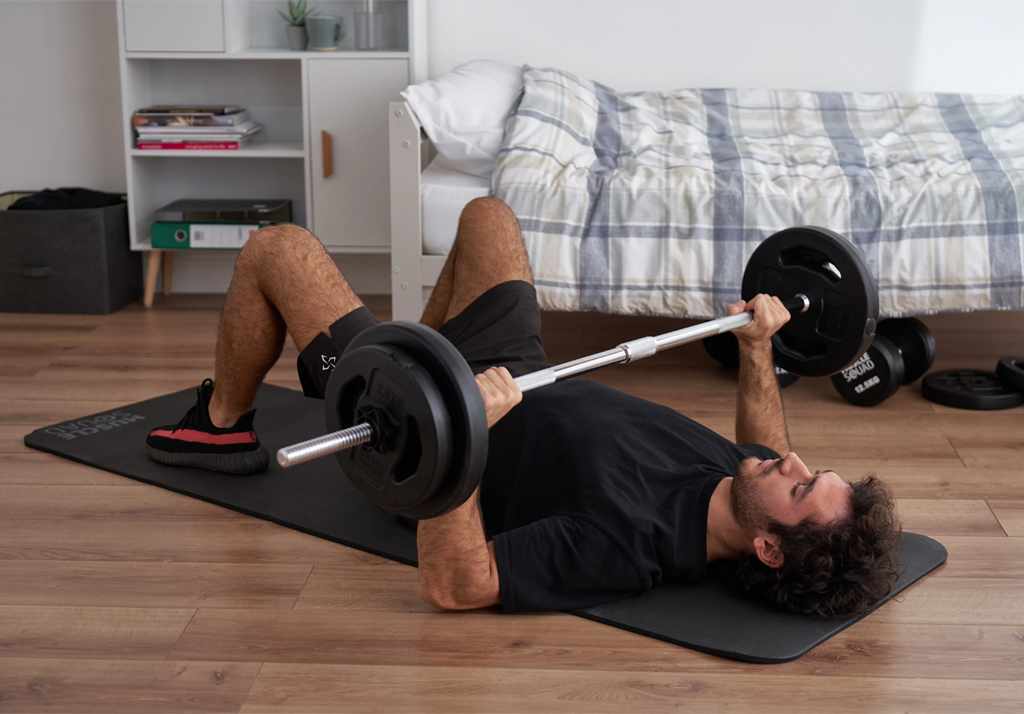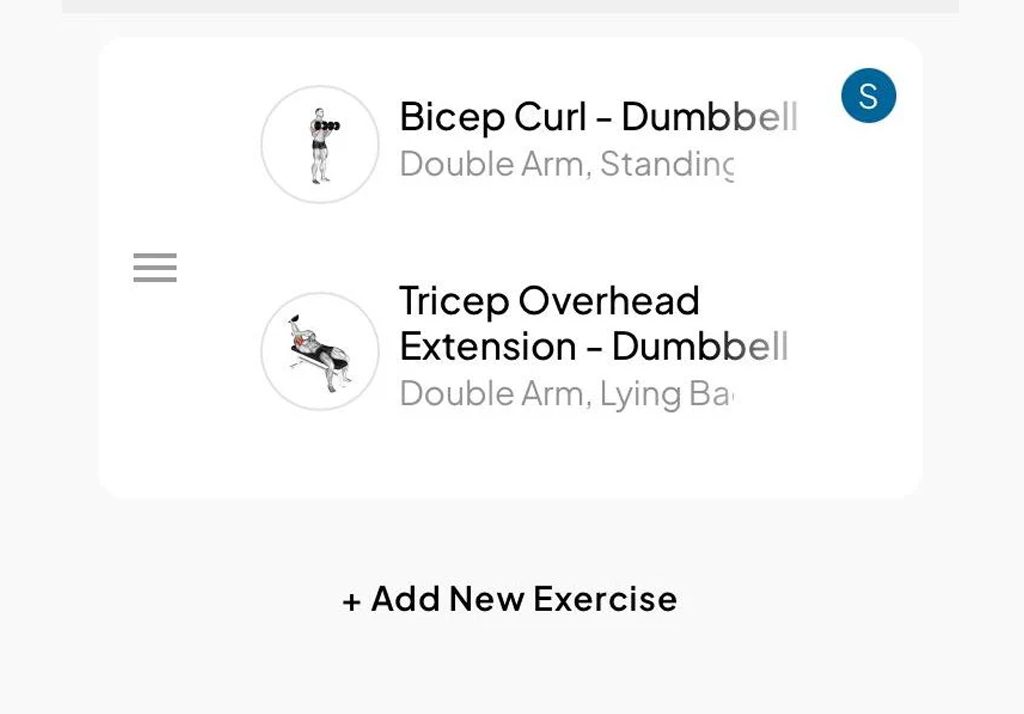The conventional squat is done using a barbell, weight plates and usually some sort of power rack. While it is certainly possible to barbell squat from home, there are some practical limitations. Weight plates, a barbell and especially a power rack are not only pricey but also take up a large footprint.
If you have the budget and space for a set-up like this, do it.
If not, this one’s for you. Here’s how to squat with a pair of dumbbells.
Are squats with dumbbells effective?
Squats with dumbbells can be even more effective than barbell squats at building muscle in your legs when done correctly.
The dumbbell pistol squat and Bulgarian split squat are both unilateral exercises. This means they work one leg at a time, helping to smooth over any imbalances caused by barbell squats.
The main difference between barbell squats and squatting with dumbbells is that dumbbell squats don't work your core and lower back as much as a barbell would. To make up for this, you should add some dedicated ab and lower back work to your workouts.
Is it harder to squat with dumbbells?
It really does depend on the type of dumbbell squat you’re doing. However, less stress on your lower back means they are easier to recover from and are less likely to impact your other workouts.
Dumbbell squat variations
Dumbbell Pistol Squat
This variation of the squat uses only one leg at a time, which helps to eliminate the need for added weight. Generally speaking, the single-leg squat requires just one dumbbell, but a platform/box at about knee height could be helpful if you're not an experienced lifter.
To perform this exercise, stand on one leg and hold your other leg out in front of you. Hold the dumbbell into your chest with both hands and begin to lower yourself down. Once the top of your thigh is parallel with the ground, drive yourself back upwards without swinging your arms. If you are using a box or platform to help, lower yourself onto the platform and then drive upwards. Complete a sufficient number of reps on one leg, then switch to your other leg before resting for your next set.
What are the benefits of pistol squats?
- The single-leg bodyweight squat can be done with minimal equipment.
- It provides plenty of intensity to build leg strength and size without the need for heavy weights.
What are the limitations of pistol squats?
- Most beginners will require a platform/box to assist with the movement.
- Requires lots of balance and is hard to perform with good form.
Resistance Band Squat
The resistance band squat is one of the cheapest and best space-saving alternatives to the traditional barbell squat. All you need to do this exercise is your bodyweight and a resistance band.
To perform the resistance band squat, stand upright and place your feet evenly over the band, about shoulder-width apart. Stretch the other end of the band over your head and hold it on your shoulders/upper back. Then, simply lower yourself down until the tops of your thighs are parallel with the floor. Once you’ve reached this point, drive yourself up and repeat.
What are the benefits of resistance band squats?
- The resistance band squat takes up no space in your home gym. Once you’re done, just put the resistance band away.
- Very cost effective; bands are extremely cheap.
- The band can also be used for a variety of other exercises.
What are the limitations of resistance band squats?
- The band means there isn’t tension throughout the entire movement like you’d get with a barbell squat.
- The band can also be awkward/painful to hold.
- You may need to do a very high number of reps to reach an adequate intensity. The exercise is better suited to being part of a superset.
Goblet Squat
The goblet squat can be an effective way of building muscle in your legs from home. All you need to do it is a single dumbbell or kettlebell. This means you’ll have constant tension throughout the movement, similar to a traditional barbell squat.
To do this exercise, grab a single dumbbell or kettlebell. Grip it in the palm of your hands underneath one of the two dumbbell heads or on the kettlebell handle. Hold the weight against your chest with your elbows tucked. Keep your feet at just wider than shoulder-width and lower yourself down until you reach parallel or lower. Then drive yourself up with your back straight and chest high.
What are the benefits of goblet squats?
- Constant tension throughout the movement.
- You can go deep without much discomfort.
- Having the weight in front of you places an emphasis on your core as well as your legs.
- Single dumbbell/kettlebell means the goblet squat can be completed in a small space.
What are the limitations of goblet squats?
- Sometimes your grip can fail before your legs have reached fatigue.
- More suitable as an accessory movement (i.e substitute for leg press/leg extension) rather than your main squatting movement.
Bulgarian Split Squat
This is undoubtedly the best alternative to barbell squats. It works by targeting one leg at a time, allowing you to fix any previous imbalances you may have built up from traditional squats. All you need to complete the Bulgarian split squat is one or two dumbbells/kettlebells (depending on how heavy you want to go) and a platform that reaches about knee height. You can use a weight bench for this purpose if desired.
To do Bulgarian split squats, hold your weights in each hand and place one foot behind you on the platform and place your other foot out in front of your waist. Whilst keeping balanced, lower yourself down until the top of your front thigh is parallel with the ground or lower, then drive yourself up with your front leg. Complete an adequate number of reps on one leg, then switch.
What are the benefits of Bulgarian split squats?
- Effectively targets your quads whilst also hitting your glutes and hamstrings.
- It’s possible to go heavy to help you gain strength.
- Single leg targeting means no imbalances and any existing imbalances will be fixed.
What are the limitations of Bulgarian split squats?
- If you don’t have heavy dumbbells, you’ll have to complete a high number of reps to reach fatigue.
- They are extremely gruelling. You’ll need a lot of willpower to do them, but the results speak for themselves.
Can you squat with dumbbells?
Yes, you can, and as we’ve discovered you can often squat with even less.
The dumbbell pistol squat can be done with minimal equipment and provides a great stimulus for muscle growth. However, if you are a beginner, it can be hard to execute this exercise with good form.
The resistance band squat provides a good substitute to barbell squats. If you have no equipment other than a band, these are the ones for you. But, if you have dumbbells as well as a resistance band, keep this exercise as an accessory movement — maybe as part of a superset.
Goblet squats are an excellent way to squat from home if you only have one dumbbell/kettlebell. If you have a pair of dumbbells or kettlebells, use goblet squats as an accessory movement, and keep your main squatting movement as…
…the Bulgarian Split Squat. An excellent substitute for the traditional barbell squat. It targets the quads, glutes and hamstrings, and can be done with one or two dumbbells. Arguably the most tiring and painful leg exercise, having Bulgarian split squats as your primary squatting movement will give you those monster quads you’ve always dreamed of.

 Feb 01, 2022 - Jamie Grover
Feb 01, 2022 - Jamie Grover


Leave a comment: